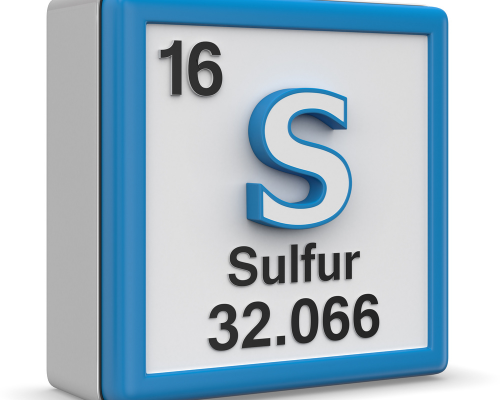This post is Day 21 of solo backpacking the SHT with MCAS continuing my journey on the Superior Hiking Trail with a chronic condition called Mast Cell Activation Syndrome (MCAS).
Table of Contents
Kennedy Creek
I awoke to a glorious breeze blowing through my tent and was so relieved. My gear was dry, bugs weren’t an issue, and that beautiful breeze kept me feeling cool and energized all day.
On today’s ten-mile section, I was headed toward five climbs over rocky overlooks, including the Section 13 Vista, Picnic Rock, and Sawmill Dome. But before that, I passed an enormous rock called a glacial erratic — a rock that was picked up by the glacier and deposited somewhere else. In this case, it was a very large rock by itself in a maple forest.
The morning passed quickly with relatively easy ascents and descents. I’d been a little worried about the absence of water in the creeks I’d passed yesterday, but today I had multiple opportunities to fill up my water bottles.
Early today, I saw fewer day hikers and more thru-hikers. But once I neared the Highway 6 trailhead the preponderance of day-hikers increased. They were out to enjoy the incredible vistas on such a clear bright day. From up on these rocky outcroppings I could see far down into the forest where I had come this morning, and out toward Lake Superior where white caps were being kicked up by the steady wind.
After a section of riparian forest, the trail continued along the last several miles the trail hugging the side of a hill until it came to the Lime Squeezer, two huge rocks next to each other with just enough room for a person to squeeze in between. (Sorry no picture, I was tired by then).
After that, the trail descended to a long boardwalk where I didn’t notice a nail sticking up several inches because it was hidden by weeds. It snagged the elastic on my gaiter and I fell headlong onto the boardwalk, but luckily I was unhurt. Then I encountered a joyful group of 40 teenagers with several adult leaders on a day hike from Wolf Ridge Environmental Learning Center.
I arrived at East Kennedy Creek campsite and met back up with the retired Spanish teacher and the couple I’d met the first night who were retired genetics professors from the U of M. I enjoyed talking with the couple about the backpacking trips they had taken with their two sons and sharing our impressions of the trail.
I fell asleep hearing happy shouts coming from Wolf Ridge, grateful for the continued breeze keeping me cool, and for the positive change in my mindset since yesterday.




What is MCAS?
Mast Cell Activation Syndrome (MCAS) is a chronic condition that affects all organ systems. It can cause severe, disabling symptoms every day, including potentially fatal anaphylaxis. MCAS often occurs with other chronic conditions like Ehlers-Danlos Syndrome (EDS) and Postural Orthostatic Tachycardia Syndrome (POTS). Managing MCAS is challenging because many healthcare providers are unaware of it, and diagnostic tests can be unreliable. Treatments involve using antihistamines, mast cell stabilizers, and avoiding triggers. Check out this post on how to manage MCAS.
The bucket theory
The bucket theory simplifies understanding symptom reactions with MCAS. Imagine your body as an empty bucket you don’t want to overflow. Reactions to various stimuli fill the histamine bucket at different rates, forming the total histamine level (how full your bucket is). More histamine means more symptoms. By managing triggers, reducing exposures, and taking medications and supplements, you can control your bucket’s level.
Know your typical symptom progression
Knowing your symptom progression in a symptom flare is the key to developing your rescue plan. This post discusses how to recognize your symptom progression to be prepared to address those symptoms.
Get my free ebook, symptom log, and meal plan!
Want a tool to easily keep track of your symptoms? Sign up for my newsletter and you will receive my free 50-page ebook of lower-histamine, grain-free, sugar-free recipes, my free symptom log, and a free two-week meal plan!
Sign up for the SSP!
The SSP is a listening therapy based on Polyvagal Theory created by Stephen Porges to unlock your ability to think, feel, and connect better through nervous system regulation. You use the SSP via an app on your phone and listen with over-the-ear headphones to specially filtered music that heals the nervous system, specifically the vagus nerve. You subscribe to the app with a provider like me and listen to the specially curated music for 30 minutes each day for a 5-hour cycle. Studies show the SSP has a profound effect on mental health and chronic conditions
You can sign up for the SSP here!
Order my book!
Rocks and Roots chronicles my journey solo backpacking the Superior Hiking Trail and overcoming nervous system dysregulation, gut dysbiosis, and Mast Cell Activation Syndrome symptoms to hike 328 miles successfully.
Check out this powerful frequency device
Healy is an individualized microcurrent device I use to reduce inflammation. Check out this post for more about Healy.
Sign up for a session!
I provide one-on-one in-person and remote chronic illness and caregiver coaching and Sacred Self-Healing Sessions based on the Sacred Self-Healing Method, a proven novel co-creative healing modality detailed in my Books.
Click here for more information.
What do you think?
I’d love to have your reply below!
Disclaimer
The preceding material does not constitute medical advice. This information is for information purposes only and is not intended to be a substitute for professional medical advice, diagnosis, cure or treatment. Always seek advice from your medical doctor.





